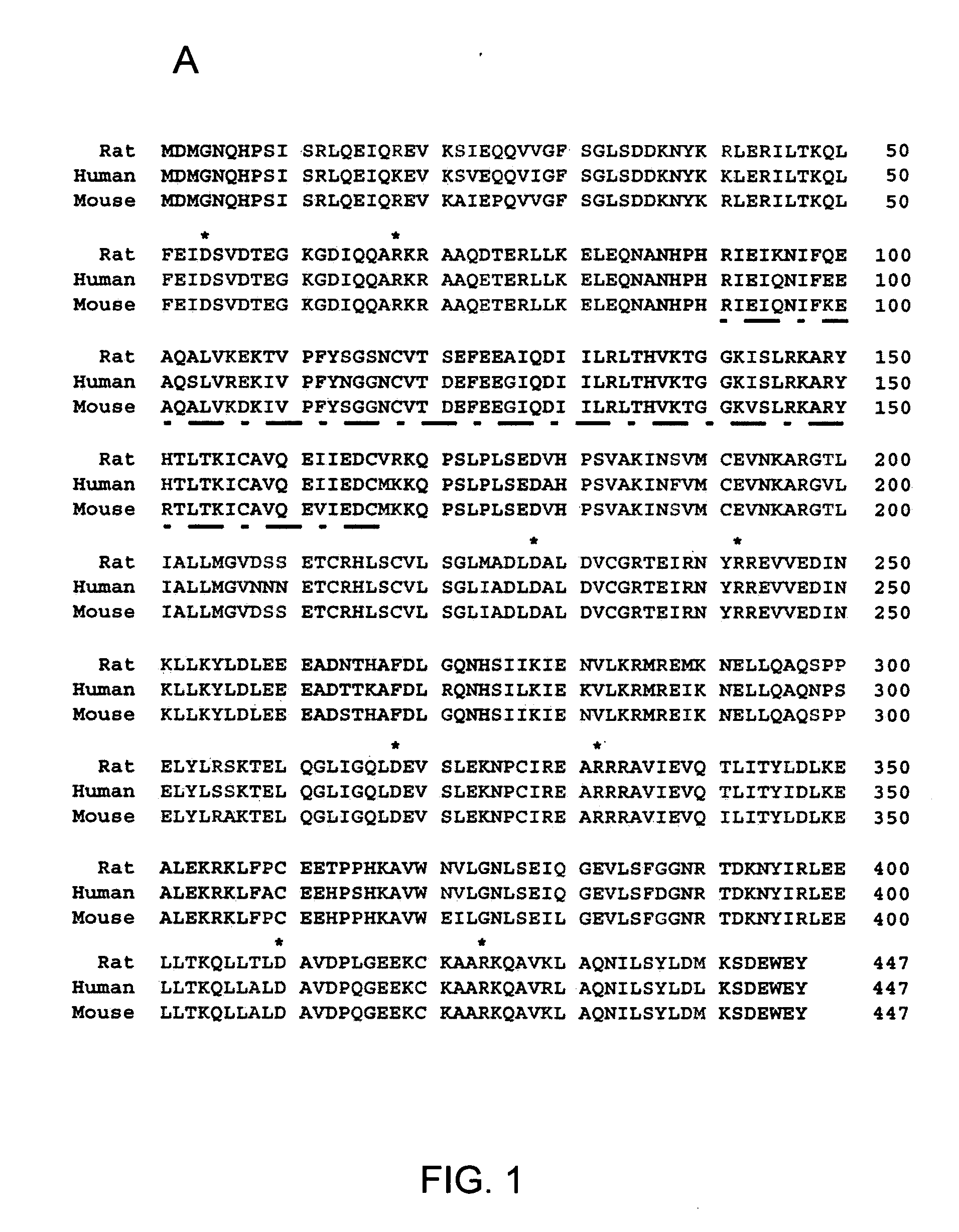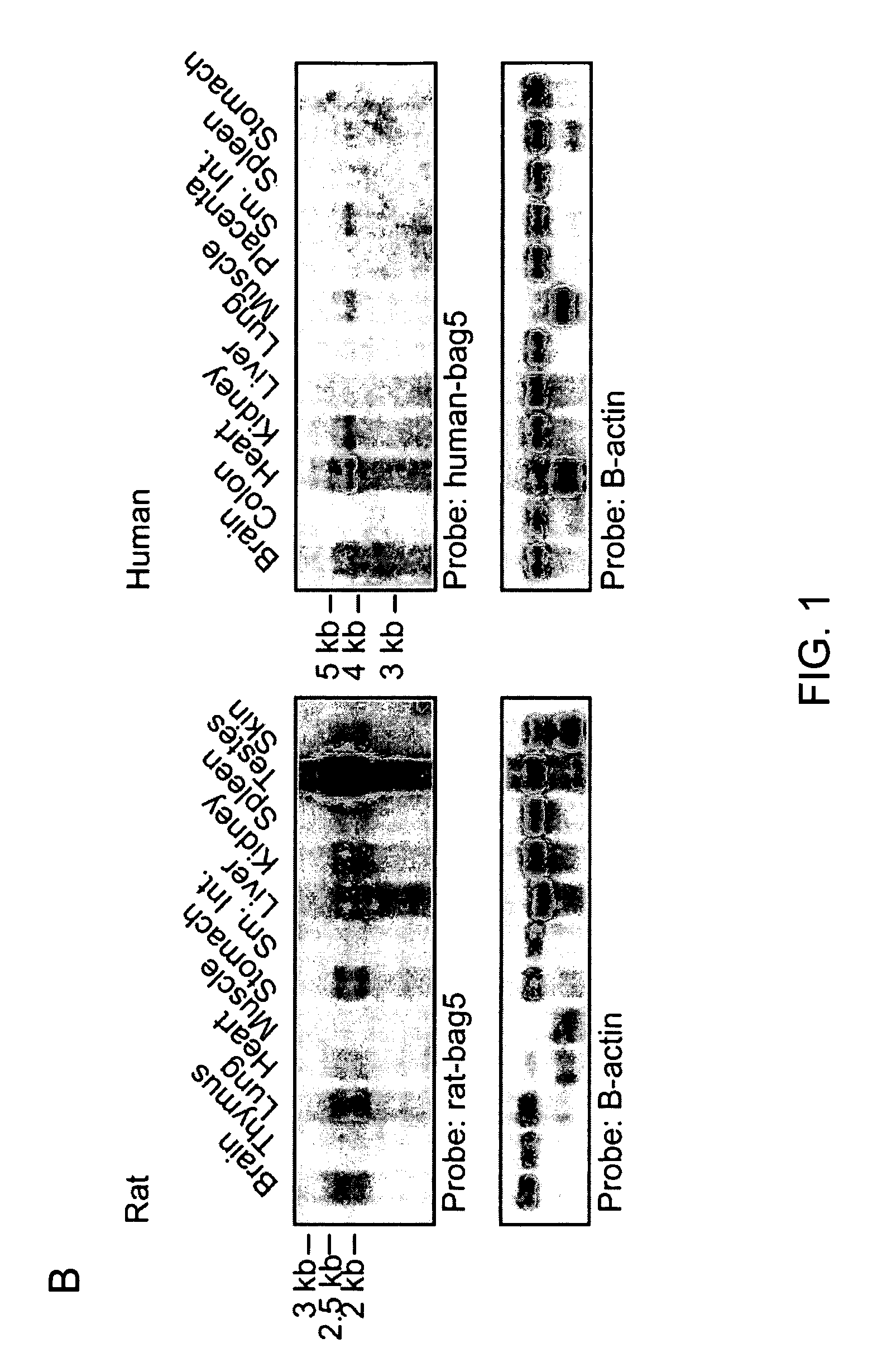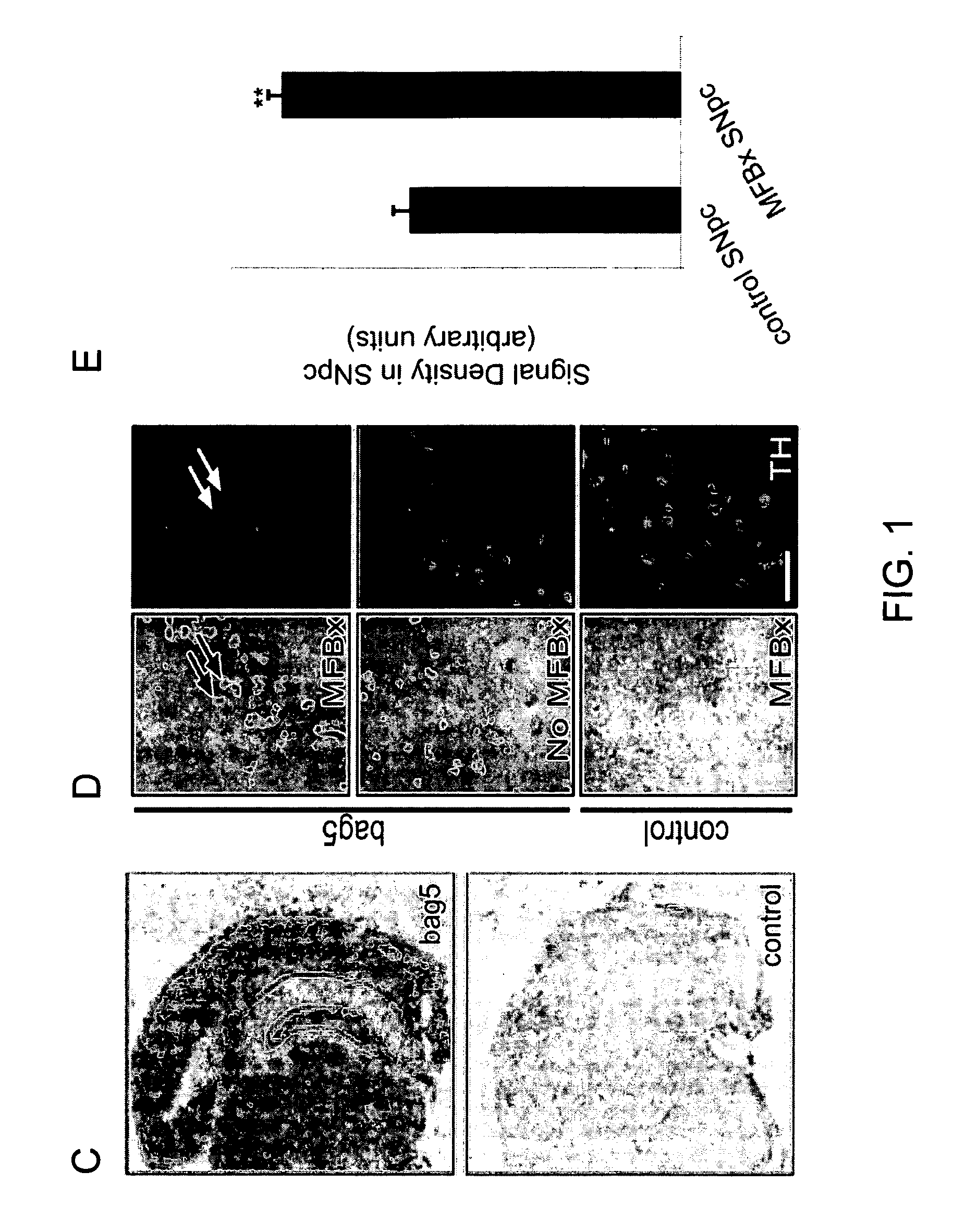Compositions and methods to inhibit cell loss by using inhibitors of BAG
a technology of bag and inhibitor, which is applied in the field of cell biology, can solve problems such as function, and achieve the effects of attenuating cell loss, increasing or enhancing cell survival, and attenuating or inhibiting protein aggregation
- Summary
- Abstract
- Description
- Claims
- Application Information
AI Technical Summary
Benefits of technology
Problems solved by technology
Method used
Image
Examples
example 1
Cloning of BAG5 and Vector Construction
[0219] Rat Bag5 was cloned by screening a cerebellar library combined with RT-PCR and 5′-RNA Ligase Mediated RACE from rat brain RNA (RLM-RACE, Ambion) (see FIG. 1) (GenBank® Accession Numbers rat is AY366364; human is NM—004873 and mouse is XM—127149).
[0220] Human Bag5 and Bag1 were cloned by RT-PCR from SH-SY5Y cells (ATCC) and were transferred into pDONR201 (Gateway, Invitrogen). The 5′ end of human Bag5 was cloned by RLM-RACE using human brain derived cDNA (Ambion). Sequencing was performed in both directions using multiple overlapping primers (ACGT, Toronto, ON). Discrepancies between sequences were resolved by analysis of chromatogram data. BAG5(DARA) was prepared with the QuikChangeXL kit (Stratagene). Human parkin and Hsp70 were transferred into pDONR201 by PCR from human brain cDNA (Ambion) and pMSHsp70, respectively. Human synphilin was subcloned into a C-terminus FLAG expression vector (Sigma). The GFPu proteasome reporter construc...
example 2
Northern Blots
[0221] mRNA Northern blots (Origene) were probed with rat or human Bag5 cDNA or β-actin (Ambion) labeled with [32P]ATP (NEN) using the StripEZ probe NorthernMax-Gly kits (Ambion).
example 3
In situ Hybridization (ISH), Immunohistochemistry (IHC) and Immunocytochemistry (ICC)
[0222] IHC was performed as we have previously described by Crocker et al., 2001, which is incorporated by reference. Rat BAG5 probes for ISH were labeled using [33P]UTP (NEN) or digoxygenin (DIG) (Roche) via in vitro transcription with SP6 or T7 RNA polymerase (Promega). ICC was performed using conditions described by Junn et al. (2002) and Chung et al. (2001) and cells were analyzed using confocal microscopy (LSM-510 Meta, Zeiss).
PUM
| Property | Measurement | Unit |
|---|---|---|
| Composition | aaaaa | aaaaa |
| Nucleic acid sequence | aaaaa | aaaaa |
| Aggregation | aaaaa | aaaaa |
Abstract
Description
Claims
Application Information
 Login to View More
Login to View More - R&D
- Intellectual Property
- Life Sciences
- Materials
- Tech Scout
- Unparalleled Data Quality
- Higher Quality Content
- 60% Fewer Hallucinations
Browse by: Latest US Patents, China's latest patents, Technical Efficacy Thesaurus, Application Domain, Technology Topic, Popular Technical Reports.
© 2025 PatSnap. All rights reserved.Legal|Privacy policy|Modern Slavery Act Transparency Statement|Sitemap|About US| Contact US: help@patsnap.com



